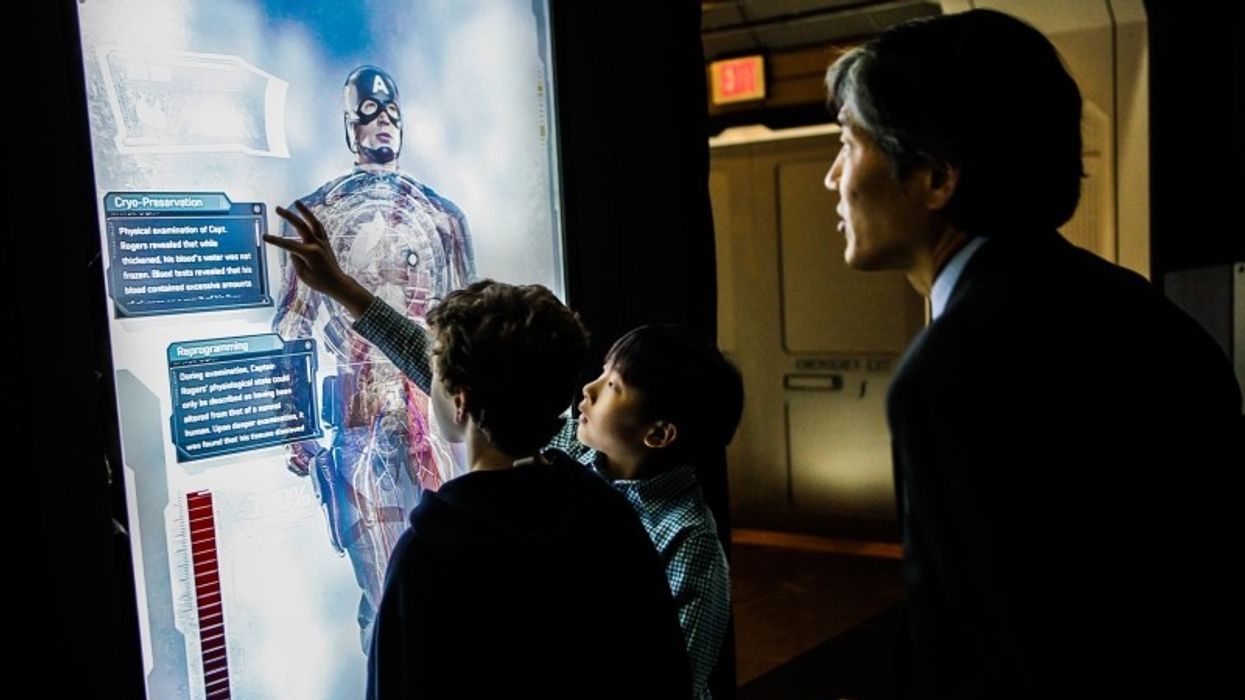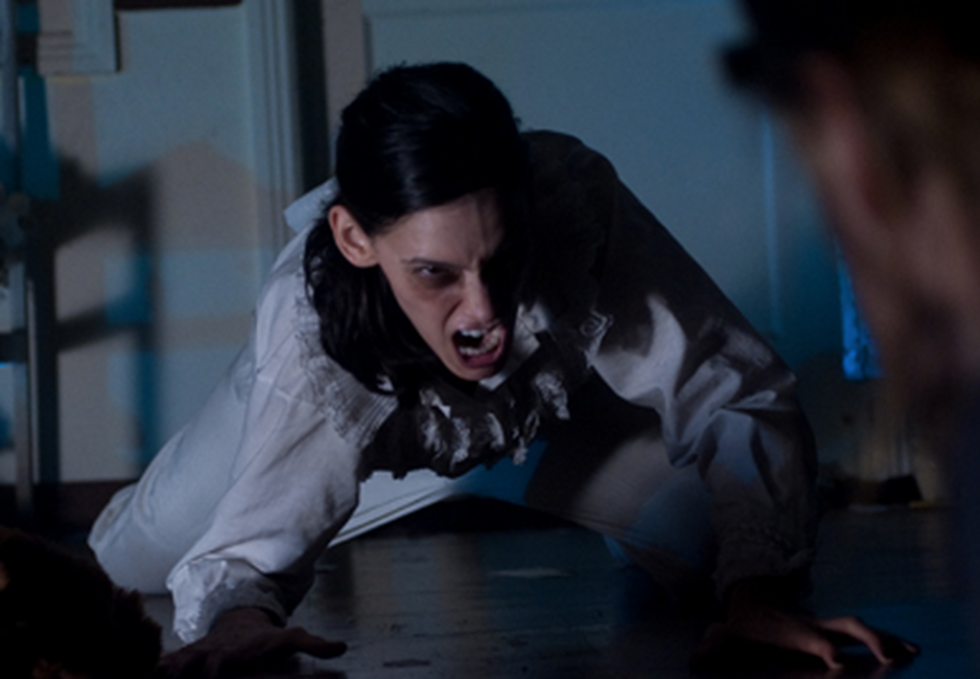6 Ways to Create Engaging Interactive Worlds
Interactive storytelling immerses the audience in worlds where they dynamically interact with other participants, creating their own narratives as they go.

Augmented reality, virtual reality, escape rooms, immersive theatre and interactive exhibits have exploded in recent years. Participants flock to these attractions because these immersive worlds let them shape the narrative around them, and each visit promises a new narrative adventure.
Four interactive storytellers came together at Sundance and shared tips on how to create these worlds and make this magic happen:
- Jon Braver, creator of Delusion, an interactive theatre experience in the horror genre
- Nate Martin, CEO of Puzzle Break, which first brought the phenomenon of escape rooms to the US—experiences where participants are locked in a room and have to figure out clues to solve puzzles and escape
- Michael Cruz, director of digital programming at Skybound Entertainment, which turns plays into experiential stories and produced an interactive VR thriller
- Nicholas Cooper, founder of Victory Hills Entertainment, which works with Marvel to create interactive Avengers exhibits where the audience members create their own story and explore within the presented world
Kamal Sinclair, the director of the New Frontier Lab Programs at the Sundance Institute, guided their conversation as these creators talked about how to make experiential story-telling work. Here are six tips NFS gathered from these interactive storytelling experts on how to create engaging interactive worlds:
1. The dynamic of players engaging with other players is paramount
Martin reflected that it is sometimes hard for filmmakers to realize that player interaction is the most important aspect of experiential storytelling because they have to accept that the narrative they create doesn't matter so much. Experiential storytelling is about creating an environment where players create the story themselves. Instead of telling a story, the "storytellers" are creating a world in which the participants can exist and interact with each other. "Instead of telling a story from A to B," Martin explained, "you're creating an architecture for a story to happen."
2. Figure out what the goals of the creators are and which medium is the best for that story
Cruz encouraged filmmakers to remember that every story, and hence every creator, has a different goal for why they are telling their tale. Perhaps the goal is to propel the audience to create something between themselves. Maybe the experience should present them with a series of moral choices, or even educate them about a place, time, or an individual.
99% of storytelling comes down to one thing: you're telling a story for one human.
If the goal is to tell the story of Martin Luther King, Jr., a good medium is likely a passive one, such as a book or a movie, since the events under consideration are fixed in time. But if the goal is to get the participant to connect with the civil rights movement in a more personal way, an interactive medium that allows the participant to take on the role of a black man in Atlanta decades ago who is presented with moral choices may be a more effective medium. Scenarios can be presented so the participant can understand where the character is coming from: does he march on Washington? Does he stay home with his family?
Think about which medium best engages the audience. 99% of storytelling comes down to one thing: you're telling a story for one human. A film, a novel, a room that has five people trapped in it fighting against a clock: the goal of the storyteller is to make sure that each person gets the story.
3. Don't write a narrative longer than a page
Martin highlighted the importance of respecting the intelligence of the audience and letting them create their own story. "Don't bludgeon players with a narrative," Martin said. "Don't get in the way of awesome dynamic moments of players with players. I create the architecture and then I get out of the way of the players and you guys go crazy." Martin's initial endeavor was simple: "We invested a little bit of money and built a room in Seattle with duct tape and bailing wire and it exploded."
"I create the architecture and then I get out of the way of the players and you guys go crazy."
Allowing the audience to create their own path often results in participants returning multiple times, as they can have different experiences each time, depending on everything from who they choose to attend the experience with and which actors they follow.
4. Pick the right actors
Braver's business model puts so much trust in the audience to move the story forward. The guides to this experience are the actors, and it takes lots of rehearsal and lots of preparation to make the endeavor successful.
In his theatre experience Delusion, participants can be overwhelmed by the experience—it is an interactive horror show!—and hiring the right actors who can engage and recognize when someone is starting to lose it a little bit and jump in and stop the play is essential. The show also sometimes attracts belligerent participants, and knowing how to single them out and embarrass them just enough to have them fall in line helps maintain the story world.

5. Remember: the experience is about creating connections with the actors, the participants and the medium
Cooper, the creator of interactive worlds around The Avengers, focuses on evoking feelings from participants through emotional investments with the characters. When creating the experience, Cooper wondered, "How could I live in Marvel world for an hour or an hour and a half?"
Cooper created a space that allows people to delve into whatever they want to explore. There is a huge amount of content necessary to create these worlds: the characters' personal life, work life, personality traits. But more than whether or not a character has a superpower, Cooper and his collaborators at Marvel focuses on what makes the characters empathetic: what drives the characters, their ability to think quickly, their big hearts.
Braver elaborated on how his own project seeks to make personal connections with its audience. "A driving force for me [with Delusion] is to bring people back to a connective state because we’re losing that and we all want it." Braver's show doesn't allow cell phones or bags—he wants people in a raw state interacting with each other in a physical, intimate realm. Horror is a genre that brings people together—they all want to bond with each other after the experience.
6. Collaborate!
To create the immersive experience for Marvel, Cooper described how he sits down in a room with fourteen rocket scientists, eating pizza, drinking beer and watching Thor. The process takes four hours to get through the movie because they continually pause the film and discuss how they can re-create different sequences in various interactive worlds.
"We all collaborate with a whole range of different people," Cooper explains. "It’s my vision and my direction, but I work with incredible advisors and it is a collaborative process. We spitball and continually try to come up with something new."
The main take-away? Give the audience a space where they have *room* to make choices and interact with each other, so they can connect with each other in a dynamic way and have a role in their own story's outcome.
For more, see our complete coverage of the 2017 Sundance Film Festival.
Featured image: Marvel's The Avengers S.T.A.T.I.O.N. Exhibit. Source: Victory Hill Exhibitions













